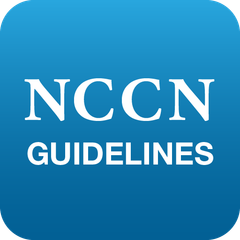
Differentiations Between Symptomatic Versus Asymptomatic Patients with PV
Dr Gerds explores similarities and differences in symptomatic patients compared to asymptomatic patients with PV.
Episodes in this series

Aaron Gerds, MD, MS: Certainly patients with polycythemia vera [PV] can present both symptomatically and asymptomatically, and it’s not well-defined what proportion of patients [have] asymptomatic presentation. But a very common scenario is that of a patient going to see their primary care doctor, getting routine bloodwork done, and finding that they have elevated hemoglobin and hematocrit and being referred to a hematologist for further workup. So that, again, is a very common presentation. And often in those cases we’ll look back and notice that the patient has been having symptoms from their polycythemia vera all along. Although touted as an asymptomatic case, it may not necessarily be. So you ask them about itchiness, and they say, “Yeah, my skin is itchy after every hot shower I take.” Or “Yes, I’ve been having some night sweats” and “Yeah, I’ve been having some discomfort in my left side of my abdomen,” so we can often go back and even in the asymptomatic case pull symptoms that may have been flying under the radar all along.
Asymptomatic PV is incredibly important for a primary reason: We want to control these patients counts and be mindful of things that can occur in the future in terms of disease progression, by controlling the counts, keeping…under 45% to reduce the risk of blood clots. That is the major contributor of morbidity, mortality in patients with polycythemia vera,…blood clots or thrombosis. So asymptomatic patients may go along, not being diagnosed and not being followed and not having their counts under control, which can increase the risk for significant and serious life-threatening blood clots in the future. And so certainly identifying these patients and getting their counts under control, minimizing that risk as much as we can prior to a blood clot, is so important.
Asymptomatic patients are found in a state where they may not be having significant symptoms that prompt them to go see a doctor or a health care provider. And again, [they] often are discovered on screening visits where they’re seeing their doc, they’re getting their normal blood counts checked, and hemoglobin and hematocrit are elevated. So I think it’s key that no elevated hemoglobin goes unworked up, if you will…. We take every elevated hemoglobin seriously and we begin to figure out, why is the hemoglobin elevated in that patient? Why are they having a erythrocyte ptosis? Is it a secondary cause from smoking or from sleep apnea? Or is it truly a primary issue with the bone marrow, ie, polycythemia vera? So I think it’s important to address erythrocyte ptosis in every patient that is discovered so we can identify those asymptomatic cases quickly and get them under proper treatment.
For me, the key for diagnosing asymptomatic polycythemia vera is sticking with regular doctor visits with your primary care doc because, again, that’s how we find these patients most often. It’s a 2-step process. One, going to see your primary care doc and getting your routine bloodwork done. And then, 2, recognizing when the counts are abnormal and then working that up in an accurate and quick manner to make the diagnosis. But the first step is always seeing your primary care doctor, getting your routine screening done. That needs to be done every year for not just polycythemia vera, but all cancers and other diseases such as diabetes and hypertension. So [putting] it in that category of good old-fashioned health care maintenance will increase our ability to detect asymptomatic disease.
Transcript is AI-generated and edited for clarity and readability.
Newsletter
Stay ahead of policy, cost, and value—subscribe to AJMC for expert insights at the intersection of clinical care and health economics.






























































